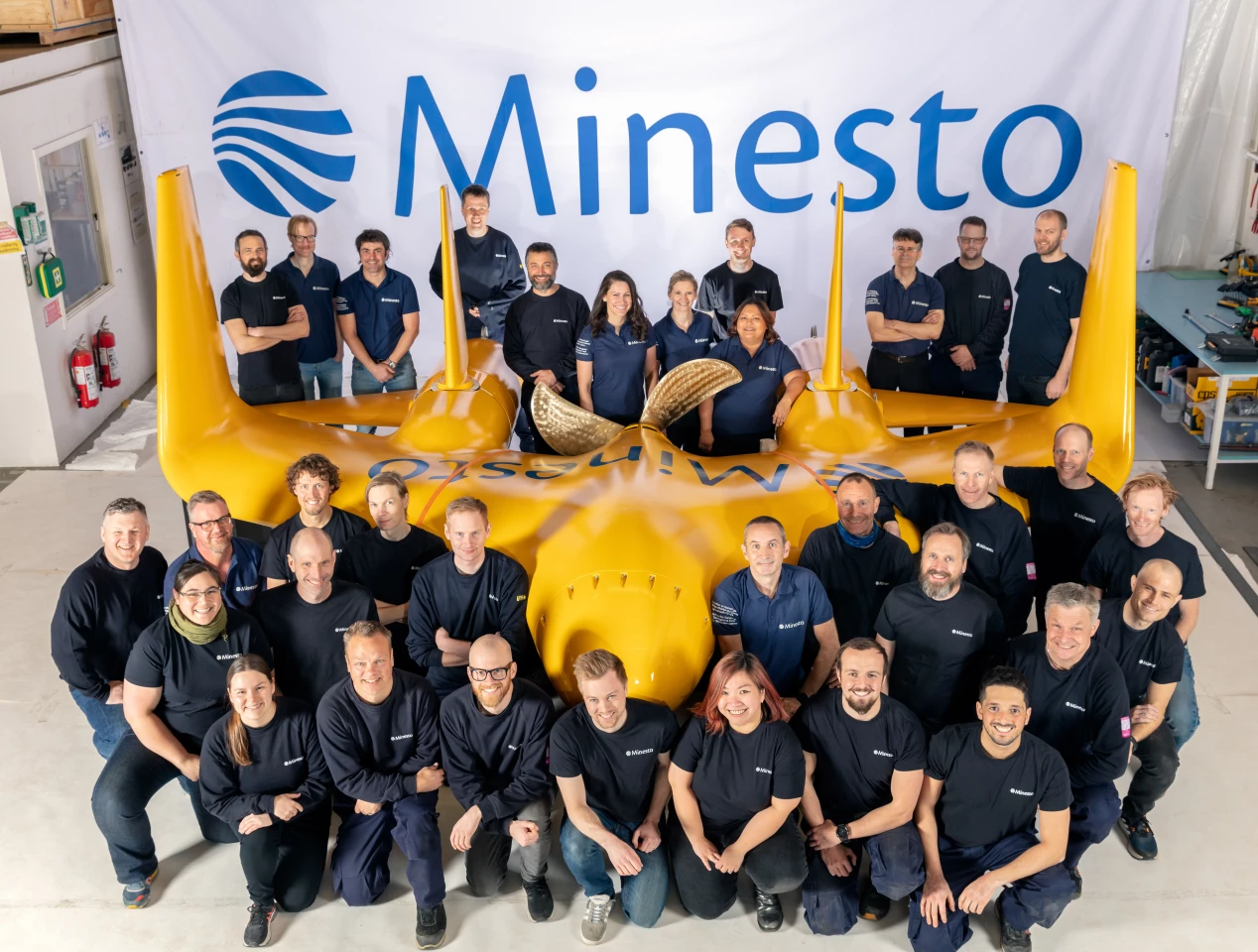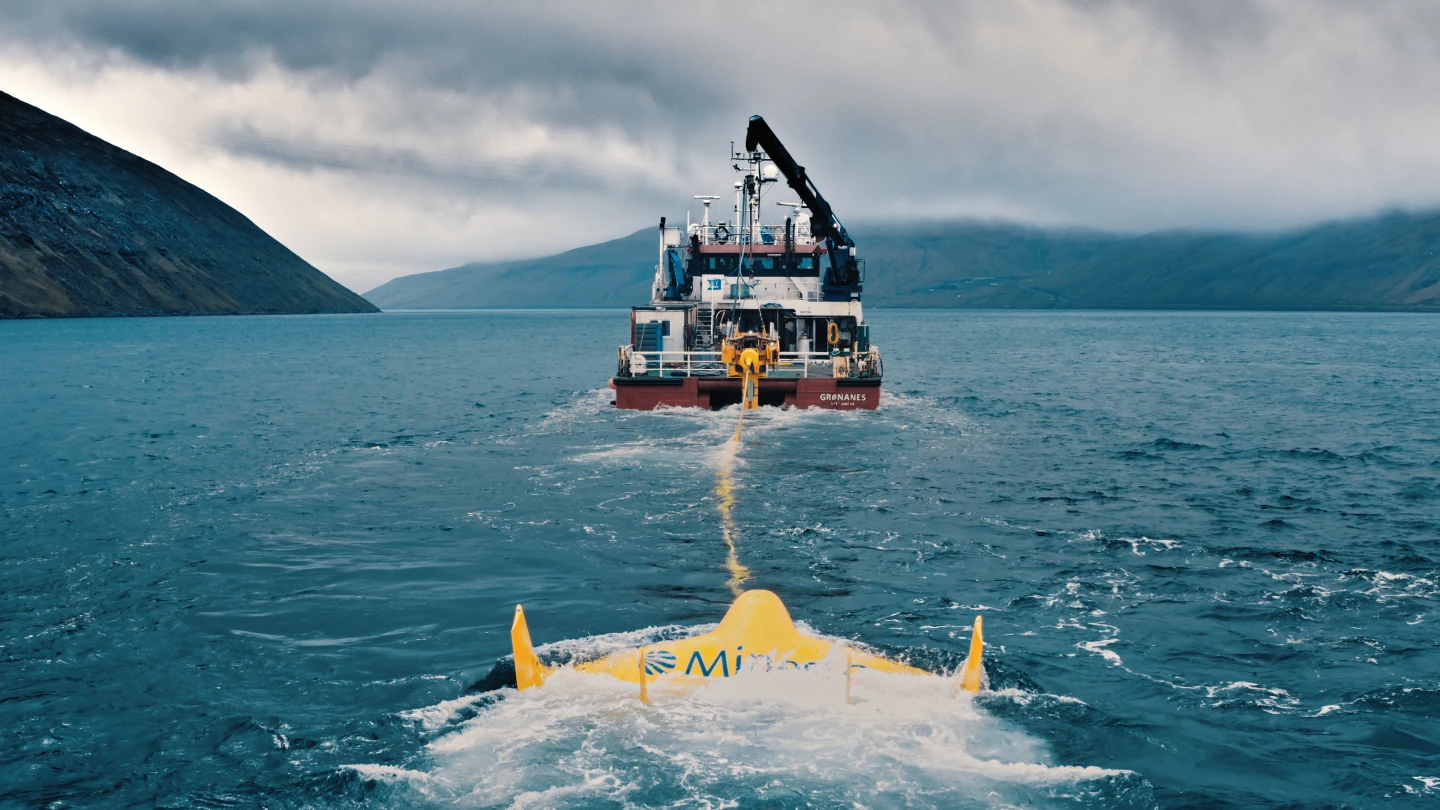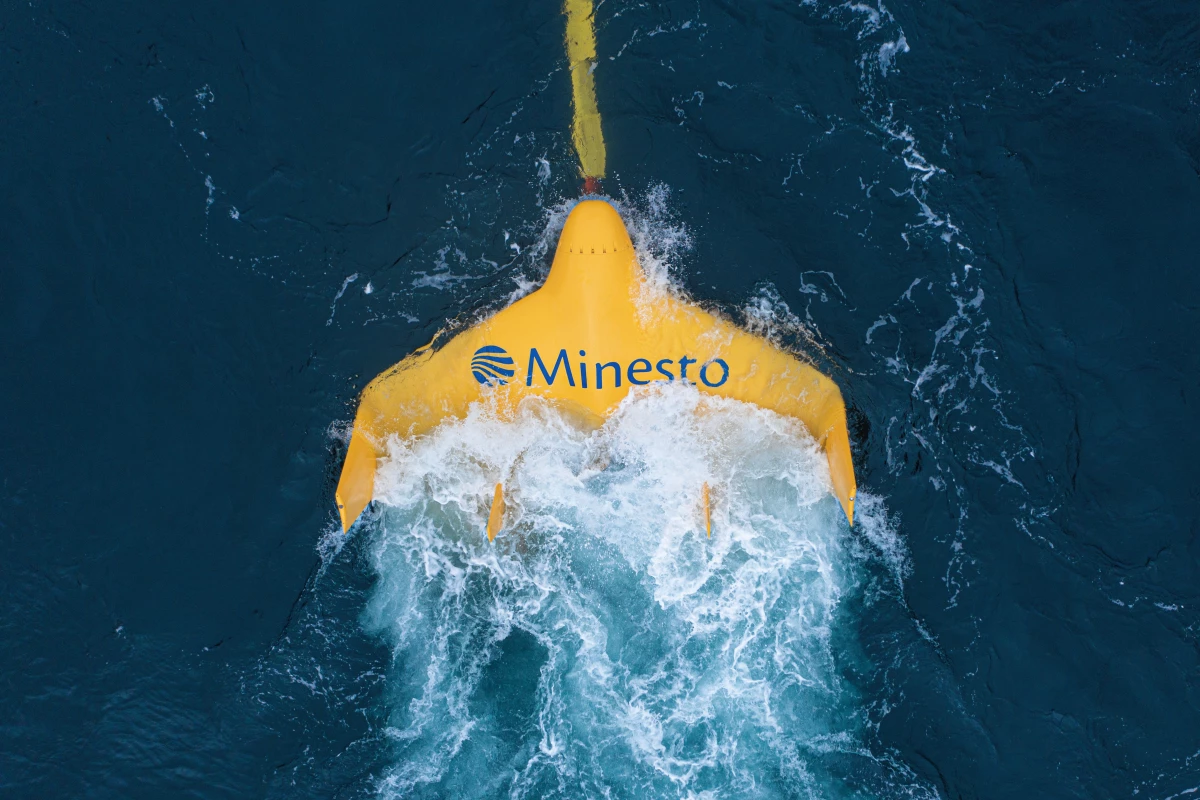Minesto's fully operational Dragon 12 looks like some sort of futuristic military drone – but it behaves remarkably like a kite underwater. It uses lift generated by tidal flows to fly patterns faster than the currents, harvesting renewable energy.
Solar energy is the bedrock of most renewable energy grid plans – but lunar energy is even more predictable, and a number of different companies are working to commercialize energy generated from the regular inflows and outflows of the tides.
One we've completely missed is Minesto, which is taking a very different and remarkably dynamic approach compared to most. Where devices like Orbital's O2 tidal turbine more or less just sit there in the water harvesting energy from tidal currents, Minesto's Dragon series are anchored to the sea bed, and fly around like kites, treating the currents like wind.
Just as land-based wind energy kites fly in figure 8 patterns to accelerate themselves faster than the wind, so does the Dragon underwater. This, says Minesto, lets the Dragon pull more energy from a given tidal current than other designs – and it also changes the economic equations for relevant sites, making slower tidal flows worth exploiting.
These are by no means small kites – the Dragon 12 needs to be disassembled to fit in a shipping container. It rocks a monster 12-meter (39-ft) wingspan, and weighs no less than 28 tons. But compared to other offshore power options like wind turbines, it's an absolute minnow, and extremely easy to install using a single smallish boat and a sea bed tether.
As with any renewable energy project, the key figure here is LCoE (levelized cost of energy) – so what's it gonna cost? Well, back in 2017, Minesto projected about US$108/MWh once its first hundred megawatts of capacity are installed – with costs falling thereafter as low as $54/MWh.

For an unfair comparison, Orbital has claimed it's hoping for an LCoE less than $253/MWh for its very first O2 tidal turbine, a figure that'll drop with scale, and fixed-bottom offshore wind projects in 2022 had an estimated average LCoE around $89/MWh in 2022, according to the US DoE.
The Dragon 12, like other tidal devices, will be more effective in some places than others – and Denmark's Faroe Islands, an archipelago in the chilly North Atlantic between Scotland and Iceland, offer ideal conditions. Home to about 55,000 people and more than a million puffins, the Faroe Islands funnel tidal currents through a number of slim channels. This accelerates the water significantly, and thus increases the energy that devices like the Dragon 12 can harvest.

That's where the first Dragon has been deployed, and on Friday, it was connected to the local power grid to begin delivering energy.
"This is a big day for Minesto," said Dr Martin Edlund, CEO of Minesto, in a press release. "We have reached the most significant milestone in the history of the company by producing electricity to the grid with our mega-watt scale powerplant. We are both proud and happy and more than ever look forward to the journey ahead ... The competitiveness of the Dragon 12 is straight to the point; it's powerful, cost-effective and feeds predictable electricity to the grid."
Check out a video below.
Source: Minesto







